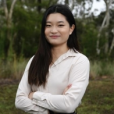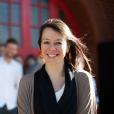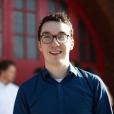
Grahame is an Electrical Engineer (BE(Hons)) and has a Master of Engineering Management (MEM)(MBA for people in a technical environment). He recently completed a Graduate Certificate in Machine Learning and Computer Vision.

Showing 61 - 80 of 1351 results

Grahame is an Electrical Engineer (BE(Hons)) and has a Master of Engineering Management (MEM)(MBA for people in a technical environment). He recently completed a Graduate Certificate in Machine Learning and Computer Vision.

Sherry entered university, torn between the allure of science and the hands-on practicality of engineering. This lead her into the field of Material Science and Engineering.
Think Science! 2025 Summary and results

As an experimental tool for the study of magnetism, neutron scattering is without equal in its range of applications.

The Food Materials Science project applies nuclear-based techniques to investigate fundamental and industrial problems of national significance in food science, including food processing and product development. ingredient selection, food, and health

ANSTO offers capabilities and expertise for the radiation testing and accreditation of space-based systems.
A desire to give people around the world greater access to the benefits of nuclear medicine is behind Robert Raposio and his research into producing radioisotopes in more efficient, cheaper and sustainable ways.
Nuclear engineer, Robert Mardus-Hall, with his research partner Andrew Pastrello, are developing nuclear power based solutions for space missions to the Moon and Mars.

Radiation can be described as energy or particles from a source that travel through space or other mediums. Light, heat, and wireless communications are all forms of radiation.
Terry has studied in Singapore and Australia, focusing on teaching design. He is passionate about cross-cultural interactive learning and design research to inspire new and innovative concepts.
Since 1962, the United Uranium Scholarship has helped promising young scientists in the field of nuclear energy extend their knowledge and expertise. In 2022, scholarships were awarded to several ANSTO researchers, including Phil Sutton.

Role at ANSTO

The Platypus instrument can be used to study all-manner of surface-science and interface problems, particularly related to magnetic recording materials and for polymer coatings, biosensors and artificial biological membranes.

Professor Christine Thong leads the academic direction for Design Factory Melbourne at Swinburne University and is involved in a range of teaching, research and strategic initiatives.
Monica Hibberd and Hamish McDougall are working together on research into greener and more efficient energy and battery technology.


Amelia Iverson is a Community Facilitator with the new VH2 Hydrogen Hub at Swinburne.

Aaron is the International Research and Development Projects Coordinator at DesignFactory Melbourne, and currently delivers DFM’s global programs with the Centre fo rDesign Research at Stanford University, the SUGAR Network for Global Innovation and Ide
An investment that will secure the long term sustainability of nuclear medicine supply in Australia.
